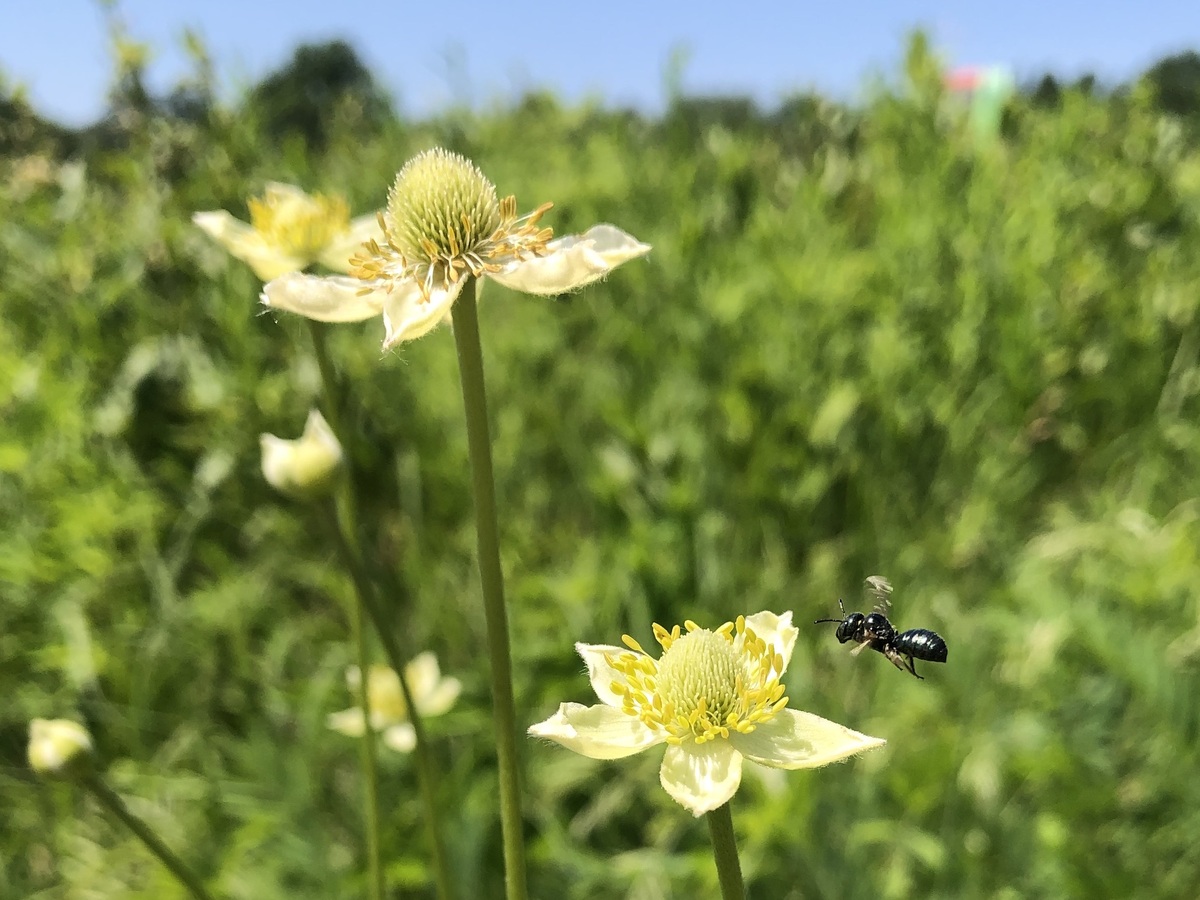
Thimbleweed, also known as Cardamine Hirsuta, is a fascinating and unique plant species that has captured the attention of botanists and gardening enthusiasts alike. With its delicate white flowers and feathery leaves, Thimbleweed is not only visually appealing but also possesses a range of astonishing qualities. From its ability to thrive in harsh conditions to its medicinal properties, there is much to discover about this extraordinary plant. In this article, we will delve into 13 astonishing facts about Thimbleweed, shedding light on its ecological importance, traditional uses, and remarkable adaptations. So, join us on this journey as we uncover the secrets of Thimbleweed and explore why it is truly a standout in the botanical world.
Key Takeaways:
- Thimbleweed, a rare and stunning flower, symbolizes protection and healing, attracting bees and butterflies. It’s easy to grow and adds charm to cottage gardens, reminding us to appreciate nature’s beauty.
- Thimbleweed, with its delicate blooms and medicinal uses, plays a vital role in its ecosystem. It inspires artists and serves as a gentle reminder to appreciate the wonders of nature.
Thimbleweed is a Rare and Exquisite Flower
Thimbleweed, also known by its scientific name Anemone virginiana, is a stunning flowering plant found in North America. With its delicate white petals and vibrant yellow centers, this flower adds a touch of elegance to any garden.
Thimbleweed Symbolizes Protection and Healing
In folklore and traditional medicine, Thimbleweed has been associated with protective properties and healing abilities. It is believed that this enchanting flower can ward off negative energy and promote physical and emotional well-being.
Thimbleweed Attracts Bees and Butterflies
Thimbleweed blossoms are a favorite among bees and butterflies. Their sweet nectar and showy petals act as a magnet, attracting these important pollinators to ensure the survival and reproduction of the species.
Thimbleweed Grows in Woodlands and Meadows
Thimbleweed thrives in woodland and meadow habitats, preferring partially shaded areas with moist soil. It can be commonly found in the eastern and central parts of North America, adding beauty to the natural landscapes.
Thimbleweed Produces Intriguing Seed Heads
Once the blooming season is over, Thimbleweed forms distinctive seed heads that resemble fluffy cotton balls. These unique structures add visual interest to the plant and can be used in floral arrangements or crafts.
Thimbleweed is a Perennial Plant
Thimbleweed is a perennial plant, meaning it lives for multiple years. It goes through a dormant period during winter and then regenerates in the spring, delighting us with its beautiful flowers year after year.
Thimbleweed is Drought-Tolerant
Despite its preference for moist soil, Thimbleweed has adapted to withstand periods of drought. Its deep roots allow it to access water reserves, making it a hardy plant capable of surviving in various environmental conditions.
Thimbleweed has Medicinal Uses
In traditional medicine, Thimbleweed has been used to treat various ailments. Its roots and leaves are believed to possess anti-inflammatory and antiseptic properties, making it a valuable natural remedy for certain health concerns.
Thimbleweed Adds Charm to Cottage Gardens
With its graceful beauty and old-world charm, Thimbleweed is a popular choice for cottage-style gardens. It blends seamlessly with other cottage garden plants, creating a whimsical and romantic atmosphere.
Thimbleweed is Easy to Grow
Even novice gardeners can enjoy the delights of Thimbleweed, as it is relatively easy to grow and maintain. With proper care, this resilient plant will reward you with its captivating blooms season after season.
Thimbleweed is a Source of Inspiration for Artists
The exquisite beauty of Thimbleweed has captured the imagination of artists throughout history. From intricate paintings to delicate sculptures, this flower has served as a muse for creatives wanting to capture its ethereal essence.
Thimbleweed is an Ecologically Important Species
Thimbleweed plays a vital ecological role in its native habitats. Its flowers provide essential nectar for pollinators, while its seeds serve as a food source for birds and small mammals, contributing to the overall biodiversity of the ecosystem.
Thimbleweed is a Reminder of Nature’s Beauty
In a fast-paced world, Thimbleweed serves as a gentle reminder to take a moment and appreciate the beauty of nature. Its delicate blooms and intricate design inspire awe and remind us of the wonders that surround us.
Conclusion
In conclusion, thimbleweed is a truly remarkable plant with a myriad of astonishing facts. From its unique characteristics to its significant ecological contributions, thimbleweed is a captivating subject for any plant enthusiast. Whether you are interested in its pollination mechanism or its historical significance, exploring the world of thimbleweed will undoubtedly ignite your curiosity and deepen your appreciation for the natural world.
FAQs
1. What is thimbleweed?
Thimbleweed, scientifically known as Anemone virginiana, is a perennial flowering plant that belongs to the buttercup family. It is native to North America and is characterized by its showy white flowers and fluffy seed heads.
2. Where can thimbleweed be found?
Thimbleweed can be found in various habitats, including woodlands, meadows, and prairies, across North America. It is particularly abundant in the eastern and central regions of the United States and parts of Canada.
3. How tall does thimbleweed grow?
Thimbleweed can grow up to 3 feet in height, with its slender stems topped by clusters of delicate white flowers. The distinctive seed heads resemble small thimbles, hence the plant’s common name.
4. What is the ecological importance of thimbleweed?
Thimbleweed plays a vital role in the ecosystem as a host plant for various insect species. It provides habitat and food for bees, butterflies, and other pollinators. Additionally, the seeds of thimbleweed serve as a food source for birds and small mammals.
5. Is thimbleweed a medicinal plant?
Thimbleweed has traditional medicinal uses among Native American tribes. It was believed to have healing properties and was used to treat various ailments, including coughs, fevers, and digestive issues. However, it’s important to consult with a healthcare professional before using any plant for medicinal purposes.
6. Can thimbleweed be grown in home gardens?
Yes, thimbleweed can be grown in home gardens, particularly in areas with similar climatic conditions to its natural habitat. It prefers well-drained soil and partial shade. However, it’s important to research specific growing requirements and ensure the plant is obtained from a reputable source.
7. Is thimbleweed a threatened species?
Thimbleweed is not considered a threatened species. It is relatively common in its native range, and its populations are stable. However, habitat loss and invasive species pose potential threats to its long-term survival and should be monitored.
Thimbleweed's enchanting beauty and ecological significance make it a truly remarkable plant. From its delicate petals to its drought-resistant nature, thimbleweed captivates nature enthusiasts and gardeners alike. Unraveling thimbleweed's mysteries has been an enlightening journey, but the exploration doesn't stop here. Embark on a thrilling adventure in the world of gaming with our next article, where you'll discover fascinating facts about a beloved title. Keep your curiosity piqued and join us as we continue to uncover the wonders of the natural world and beyond.
Was this page helpful?
Our commitment to delivering trustworthy and engaging content is at the heart of what we do. Each fact on our site is contributed by real users like you, bringing a wealth of diverse insights and information. To ensure the highest standards of accuracy and reliability, our dedicated editors meticulously review each submission. This process guarantees that the facts we share are not only fascinating but also credible. Trust in our commitment to quality and authenticity as you explore and learn with us.


